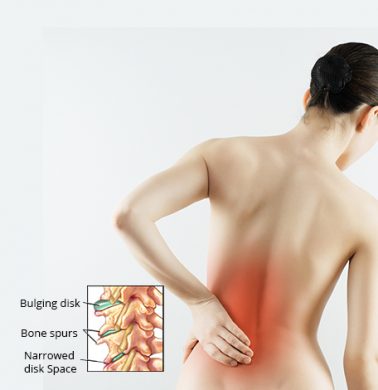
Lower Back Pain and Core Strength
LOWER BACK PAIN AND CORE STRENGTH
As discussed in my previous post, many of us spend prolonged hours sitting at a desk, either at work, in the car, and transit. Aside from pain and discomfort in the mid-back region, another common complaint that I often receive from my clients is the lower back pain. Pain in this region can be quite complex, as there are many nerve roots that exit from this area. It is also an area where our body bears the most weight and physical stress. Lower back pain can present as throbbing dull aches, involuntary spasms, as well as be shooting or tingling pain down the buttock and leg. In all cases, lower back pain greatly limits movement and be a negative hindrance to normal life and function.
It is so common that up to 85% of the Canadian working population can expect to experience low back pain during their lifetime, with occurrences most often between the ages of 30 and 50.
So Why Does This Matter?
Prolonged sitting and lower back pain are often mentioned in the same conversation. Sitting in the same position for prolonged periods can increase fatigue, deconditioning, and negative stress on the surrounding muscles and joints. Additionally, recent advances in technologies have made our population more sedentary than ever before! (think cell phones, tablets, laptops, etc).
More sedentary = less movement = more likelihood of developing back pain.
Most cases of lower back pain stem from a ‘mechanical’ cause, which simply means they are caused by placing abnormal stress and strain on the muscles surrounding the spine. Typically, these stresses and strains result from overloading the spine through habitual patterns: long months and years of poor movement habits and posture!
The most common presentation of the sedentary person is what most therapists call “lower cross syndrome”. Very similar to “upper cross syndrome” discussed in last month’s post, it has resulted from muscle imbalances in the lower segment of your body. These imbalances are not developed overnight, rather many months and years where the muscles are constantly shortened or lengthened in relation to each other. As these muscles are attached to the pelvis and spine, they have an important role in altering your overall movement in everyday life.
Pain and discomfort may begin to arise when there are dysfunction and imbalance in this lumbar-pelvic-hip complex. This complex is what is defined as “the core” of the body. The muscles of the core include the pelvic floor muscles, transverse abdominus, multifidus, internal and external obliques, rectus abdominis, and erector spinae.
These muscular structures provide dynamic and static stability to our core, which presents as a foundational base for movements in our daily lives. Core stability is often activated sub-consciously and instantaneously, which means it relies heavily on muscular capacity and neuromuscular control. The problem with poor movement habits such as prolonged sitting is that these muscles are rarely activated when we are sitting or slouching at the office desk. Over the years, our bodies adapt and lose neural connections in activating these muscles, eventually leading to pain and dysfunction at our low backs.
The good news is that we have total control of re-gaining conditioning and strength over these muscles! Our goal is to decrease the imbalances by increasing core stability through muscle endurance and control training. A strong and stable core will help in decreasing lower back pain by reducing the irritation of micro-movements of the spine.
Here are some of my favourite core strengthening exercises:
Static Core Exercises
Transverse Abdominis Activation
Instructions: Think about drawing your belly button down towards the ground/floor (“suck your belly button in”). There should be no movement of your hips, pelvis or spine during this muscle contraction. If you feel your belly just inside the left and right hip bones, this deep contraction should feel like a light, deep tension under your fingertips, not a contraction that pushes your fingers out. Hold the contraction for 5 seconds and then release and breathe throughout this exercise.
Parameters: Repeat the contraction and hold for 3 sets of 10 repetitions, 3-4 times per day.
Basic Planks
Instructions: Get in a push-up position but have your forearms on the ground instead of your hands. Your elbows should be directly below your shoulders. Keep your toes on the ground and squeeze your glutes and abdominals. Maintain a neutral neck and spine and hold this position.
Parameters: 30 seconds is a great start, progress yourself to 1 min and more. Perform 3-4 times a day.
Side Planks
Instructions: Place your elbow directly under the shoulder, perpendicular to the body. Keeping your legs straight, place your upper leg directly on top of the lower leg. Lift your hips off the floor and hold this position. Think of your whole body as a straight line while maintaining this position!
Parameters: 30 seconds is a great start, progress yourself to 1 min and more. Perform 3-4 times a day.
Dynamic Core Exercises:
Bird Dogs
Instructions: Kneel on an exercise mat or floor, positioning your knees and feet hip-width apart. Place your hands and knees so that your knees are directly under your hips and hands are directly under your shoulders. Contract your core and abdominals and position your spine in a neutral position. Slowly raise and straighten the knee, attempting to extend it until it is parallel to the floor without any rotation in the hip. Your goal is to keep both hips parallel to the floor. Slowly raise and straighten the opposite side arm until parallel to the floor without any tilting at the shoulders. Your goal is to keep both shoulders parallel to the floor. Gently lower yourself back to your starting position and repeat with the opposite limbs.
Parameters: 8-12 repetitions on each side, 3-4 times a day.
Dead Bugs
Instructions: Lie flat on your back with your arms held out in front of you pointing to the ceiling. Then bring your legs up so your knees are bent at 90-degree angles. This is the most important part: keep your core engaged and flatten your back against the floor! You shouldn’t be able to get a hand in between your back and the floor. This is your starting position.
Slowly lower your right arm and left leg at the same time, exhaling as you go. Keeping your back flat against the floor, lower until your arm and leg are just above the floor. Then slowly return to the starting position and repeat with the opposite limbs.
Parameters: 8-12 repetitions on each side, 3-4 times a day.
More Advanced Core Exercises:
Paloff Press
Instructions: You’ll need a cable machine or a resistance band for this exercise. Stand with your feet shoulder-width apart. Hold a cable with both hands directly in front of your chest. Place your inside hand on the cable handle, and your other hand overtop. Bend your knees slightly keep your hips in line with the cable column, with no rotation at the hips. Press the cable handle straight ahead, not allowing side-shifting at all. Bring the handle back to your chest. Maintain the same degree of control throughout, resisting any side-to-side movement in the handle. Repeat on the other side.
Parameters: 12-15 presses on each side, 3-4 times a day.
Stability Ball Planks
Instructions: Same instructions as the basic plank exercise, except have your elbows and forearms on a medium-sized stability ball. This ball creates increased instability and greatly challenges your core muscles!
Parameters: begin with 30 second holds, progressing to 45 seconds and 1 minute. 3-4 times a day.
Dead Bugs with Stability Ball
Instructions: This is a super challenging one! Same instructions as the dead bug exercise above but place a small-sized stability ball in between your four limbs (shown in the first image above). Maintaining a flat back against the floor, slowly lower your left arm and right leg simultaneously. Repeat with the other side.
Parameters: 8-12 repetitions on each side, 3-4 times a day.
In conclusion, these core-strengthening exercises will help to improve the overall function of the lumbar-pelvic-hip complex, which should reduce or solve lower back pain or discomfort. As with every exercise, do not expect overnight results. Build some consistency in doing these exercises every day, along with other types of physical activity (walking, biking, gardening, etc). Within a few weeks, you should notice “tighter” and stronger core muscles and hopefully decreased pain in the lower back. Lastly, if you suffer from lower back aches and pains, do not be afraid to move! Our backs are quite the robust and resilient structures that appreciates the movement that we provide.
Author:

Joshua Irwanto, MSc PT, Hons. BA Kin
Registered Physiotherapist
—
REFERENCES:
Nadler, Scott F., et al. “Hip muscle imbalance and low back pain in athletes: influence of core strengthening.” Medicine & Science in Sports & Exercise 34.1 (2002): 9-16.
Hoy, Damian, et al. “A systematic review of the global prevalence of low back pain.” Arthritis & Rheumatology 64.6 (2012): 2028-2037.

Disclaimer: Do not treat this as medical advice as it is used for educational purposes only. If you are having pain or health-related complaints, please seek out a licensed healthcare professional. Physiotherapists and chiropractors are primary health care professionals with in-depth knowledge of the human body with specializations in hands-on clinical skills to assess, diagnose, and treat illness, injury or disability.
-
-
Learn more about our Lower Back Pain program or Request a Consultation today!
55 University Avenue, Mezzanine Floor, M002, Toronto, ON, M5J 2H7, (416)7223393, Lower back Pain
-

